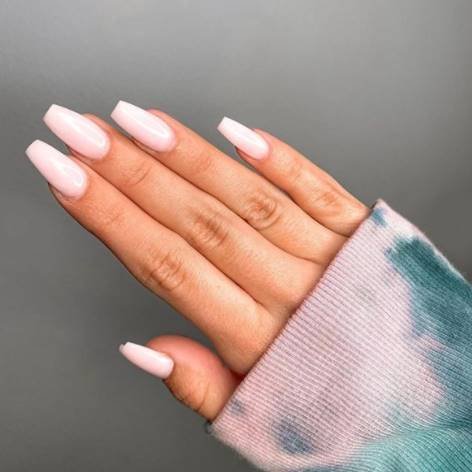Probably, every girl faced the throes of choice: to leave the length or make it shorter? Change the shape of the nails or keep the same? A competent master will always tell you what is right for you, depending on the condition and natural characteristics of the nail plate, but what about a manicure at home?
The length and shape of nails and their colour have consistently indicated the social status of their owner. It was believed that the longer the nail plate, the higher the position of a person in society. For example, in China, the presence of a servant was thus emphasized, and in England, long almond-shaped nails were considered fashionable. Long sharp nails became massively popular already in the middle of the 20th century when the possibility of extension appeared – read more about the history of manicure in our article.
To choose the shape and length, one should be guided not only by the nails’ desired design and aesthetic appearance but also by anatomical features. Therefore, before starting a manicure, evaluate your nails according to three critical criteria:
- Condition of the nail plate;
- Cuticle and nail bed shape;
- The length of the fingers.
If you are the owner of thin, prone to brittle nails, then we do not recommend choosing an extreme length. The ideal option would be to strengthen the nail plate with a polyol – today, you have the opportunity to select a material with a shimmer and even a luminescent material, which do not require further coating and also allow you to increase the length a little.
Consider also your lifestyle: for vigorous physical activity or gardening, short nails are suitable, which definitely will not break in the process and will not interfere. It is enough always to have a handy mini-file on hand, which can always be used to correct a manicure.
It is believed that the shape of the free edge of the nail should follow the shape of the cuticle – this option will look the most organic, but this does not prevent you from experimenting and trying new designs.
What forms of nails are there?
- Oval is a versatile shape that suits nails of any length.
- A square is the most durable form of nails, protecting them from creases. The only negative: square nails are most suitable for long fingers that do not need additional lengthening.
- A soft square is a more common version of a square. Thanks to the rounded edges, these nails are much more practical and more comfortable to wear.
- Almonds – similar in shape to the nut of the same name, the almond shape looks great on long nails, but it cannot be repeated over a short length.
- Stiletto – Incredibly sharp nails that look spectacular at extreme lengths and add a bold touch to the look.
- Ballerina is an elongated square, narrowed towards the end and reminiscent of ballerina’s pointe shoes. Suitable for long nails and visually stretch the fingers.
What else is essential to consider?
Some nail designs are challenging to do on your own, especially for beginners. Therefore, it is better to turn to an experienced master for long sharp nails so that the result looks neat and meets your expectations.
Remember that ultra-long nails can get in the way of housework, typing and some inconvenience – mainly if you are used to walking with short ones.
Please pay attention to the file because it can put your nails in order and delaminate them. To correct the length and shape of natural nails, use a straight file with an abrasiveness of 150-240 grit; for working with an artificial plate, choose a harder file of 60-150 grit.
